Friday, March 16, 2007
Enhanced External Counterpulsation
Yet another weapon in the noninvasive armory against stable angina and coronary artery disease -- EECP.
What is EECP?
EECP is a mechanical procedure in which long inflatable cuffs (like blood pressure cuffs) are wrapped around both of the patient’s legs. While the patient lies on a bed, the leg cuffs are inflated and deflated with each heartbeat. This is accomplished by means of a computer, which triggers off the patient’s ECG so that the cuffs deflate just as each heartbeat begins, and inflate just as each heartbeat ends.
When the cuffs inflate they do so in a sequential fashion, so that the blood in the legs is “milked” upwards, toward the heart.
EECP has two potentially beneficial actions on the heart. First, the milking action of the leg cuffs increases the blood flow to the coronary arteries. (The coronary arteries, unlike other arteries in the body, receive their blood flow after each heartbeat instead of during each heartbeat. EECP, effectively, “pumps” blood into the coronary arteries.) Second, by its deflating action just as the heart begins to beat, EECP creates something like a sudden vacuum in the arteries, which reduces the work of the heart muscle in pumping blood into the arteries. Both of these actions have long been known to reduce cardiac ischemia (the lack of oxygen to the heart muscle) in patients with coronary artery disease. Indeed, an invasive procedure that does the same thing, intra-aortic counterpulsation (IACP, in which a balloon-tipped catheter is positioned in the aorta, which then inflates and deflates in time with the heartbeat), has been in widespread use in intensive care units for decades, and its effectiveness in stabilizing extremely unstable patients is well known.
While a primitive form of external counterpulsation has also been around for a long time, it has not been very effective until recently. Thanks to new computer technology that allows the perfect timing of the inflation and deflation of the cuffs, and produces the milking action, modern EECP has been greatly enhanced.
EECP is administered as a series of outpatient treatments. Patients receive 5 one-hour sessions per week, for 7 weeks (for a total of 35 sessions). The 35 one-hour sessions are aimed at provoking long lasting beneficial changes in the circulatory system.
How effective is it?
EECP now appears to be quite effective in treating chronic stable angina. A randomized trial with EECP, published in the Journal of the American College of Cardiologyin 1999, showed that EECP significantly improved both the symptoms of angina (a subjective measurement) and exercise tolerance (a more objective measurement) in patients with coronary artery disease. EECP also significantly improved “quality of life” measures, as compared to placebo therapy.
More recent data show that this improvement in symptoms following a course of EECP seems to persist for up to five years.
Furthermore, there is also preliminary data suggesting that EECP may be useful for treating unstable angina, as adjunctive therapy after revascularization (i.e., with angioplasty, stent, and/or bypass surgery), and even as first-line (instead of last resort) therapy for more routine forms of angina. (Read about EECP as early therapy for angina here.)
Finally, clinical trials have suggested that EECP may be useful in improving symptoms in patients with heart failure. Read about EECP for heart failure here.
How EECP works, and who it may help
Who is likely to benefit from EECP?
Based on what is already known, EECP should be considered in anybody who still has angina despite maximal medical therapy and prior revascularization. No cardiologist could argue logically against this. And, frankly, if a patient insisted on trying EECP prior to agreeing to purely elective revascularization for chronic stable angina, the cardiologist might not like it, but would be hard pressed to give anything beyond a purely emotional reason as to why this should not be tried.
Why does EECP work?
The mechanism for the sustained benefits seen with EECP still amount to speculation. Everyone can agree that there are good reasons for EECP (just as for IACP) to benefit the heart while the therapy is actually taking place. But as to why the benefit of EECP persists even after the therapy is finished, no one can say for sure.
There are preliminary data suggesting that EECP can help induce the formation of collateral vessels in the coronary artery tree, by stimulating the release of nitric oxide and other growth factors in within the coronary arteries.
There is also evidence that EECP may act as a form of “passive” exercise, leading to the same sorts of persistent beneficial changes in the autonomic nervous system that are seen with real exercise.
Can EECP be harmful?
EECP can be somewhat uncomfortable (it is said to be more difficult to watch – what with the patient being noticeably jostled due to the milking action of the inflatable leg cuffs – than it is to actually have it done), but is not painful. In fact, it is apparently very well tolerated by the large majority of patients.
But not everyone can have it. People probably should not have EECP if they have certain types of valvular heart disease (especially aortic insufficiency), or if they have had a recent cardiac catheterization, an irregular heart rhythm, severe hypertension, significant blockages in the leg arteries, or a history of deep venous thrombosis (blood clots in the legs). For anyone else, however, the procedure appears to be quite safe.
Why cardiologists don't like it - and what you should do about it
Despite its increasingly apparent potential usefulness, EECP is hardly taking the cardiology world by storm. In fact, it seems that for most cardiologists EECP is not even on the list of potential treatments for coronary artery disease. Why is that?
There are several possible reasons. Let us dispense with the most obvious first, namely, that EECP doesn’t pay well. A series of 35 treatments costs $5000 to $6000 dollars. That’s not chicken feed, but keep in mind that we’re talking about 35 hours of therapy over 7 weeks, which involves not only the doctor’s time but also the time of office staff, nursing personnel, etc., etc. Still not a terrible return, but when you consider that a cardiologist can often bill that much by spending a morning in the cath lab, well - - -.
Then there’s the fact that EECP remains somewhat intellectually unsatisfying.
To your average cardiologist, there’s no reason at all that anyone should have thought it would work in the first place – that temporarily providing counterpulsation would have lasting effects. And the fact that it apparently does work is merely blind luck, and leaves investigators scrambling ridiculously to explain why it does. This is a less than satisfying way to advance science.
In addition, to most cardiologists, EECP is logistically difficult. To accommodate patients for EECP, they would not only have to purchase expensive equipment, but also would have to radically change the organization of their offices, their office staff, and their space.
Finally, and most importantly, EECP has nothing in common with what cardiologists do. Cardiologists study and treat the heart, for goodness sake. They stress it, image it, measure it, pace it, shock it, stent it, ablate it, revascularize it, and bathe it in drugs. What they do takes years of specialized training and expertise, millions of dollars of high-tech equipment, and tremendous manual dexterity, and it brings them significant prestige, even within the medical community.
Now they’re supposed to drop all that? In order to attach fancy balloons to peoples’ legs, throw a switch, watch them bounce around for an hour, then say, “See you tomorrow?” That’s not cardiology. That’s glorified physical therapy.
This, in DrRich’s estimation, is the real reason the average cardiologist is completely ignoring EECP, as if it doesn’t even exist. They simply can’t believe anyone really expects them to do this.
In any case, you may need to raise your cardiologist’s consciousness. If you have coronary artery disease that has proved difficult to treat, then you need to bring EECP up yourself.
Once enough patients show themselves to be aware of this new therapy and to be expecting it, suddenly EECP will no longer be beneath cardiologists, and they’ll eagerly find a way to incorporate it into their practices.
How can you receive EECP?
If you are a candidate for EECP and wish to pursue it, start with your doctor. If your doctor discourages you from pursuing EECP, make sure he/she gives you a good reason for discouraging it. Good reasons would include: you don’t have the sort of coronary artery disease or angina that would benefit from EECP; your coronary artery disease is of the type that requires revascularization; or you have one of the contraindications (listed above) for having EECP. (Good reasons would not include: it’s unproven; it doesn’t work; it’s voodoo; or I’ve never heard of it.)
There are fewer than 200 places today performing EECP, though the number is growing rapidly. If your doctor can’t think of a place to refer you for EECP, go online. The best place to start online would be EECP.com. This is a website run by Vasomedical, Inc., the company that makes the equipment for EECP, so it is not unbiased. But it does offer an excellent means of finding a place where you can get EECP in your area.
Your insurance carrier should cover EECP, though these fine humanitarians might well deny coverage initially. Medicare has approved EECP for reimbursement, and once Medicare approves a new treatment, insurance companies normally fall in line quite quickly. In the case of EECP, however, many insurance companies are still balking at paying, perhaps because their cardiology consultants are telling them it’s not really a serious therapy. Don’t let this discourage you. If you are turned down for reimbursement, appeal the decision. Most insurance companies count on patients failing to appeal (which is why they so frequently deny therapy that is obviously needed), and with Medicare supporting your contention that EECP ought to be covered, odds are that if you appeal you’ll win.
(From DrRich's article about EECP at About.com)
What is EECP?
EECP is a mechanical procedure in which long inflatable cuffs (like blood pressure cuffs) are wrapped around both of the patient’s legs. While the patient lies on a bed, the leg cuffs are inflated and deflated with each heartbeat. This is accomplished by means of a computer, which triggers off the patient’s ECG so that the cuffs deflate just as each heartbeat begins, and inflate just as each heartbeat ends.
When the cuffs inflate they do so in a sequential fashion, so that the blood in the legs is “milked” upwards, toward the heart.
EECP has two potentially beneficial actions on the heart. First, the milking action of the leg cuffs increases the blood flow to the coronary arteries. (The coronary arteries, unlike other arteries in the body, receive their blood flow after each heartbeat instead of during each heartbeat. EECP, effectively, “pumps” blood into the coronary arteries.) Second, by its deflating action just as the heart begins to beat, EECP creates something like a sudden vacuum in the arteries, which reduces the work of the heart muscle in pumping blood into the arteries. Both of these actions have long been known to reduce cardiac ischemia (the lack of oxygen to the heart muscle) in patients with coronary artery disease. Indeed, an invasive procedure that does the same thing, intra-aortic counterpulsation (IACP, in which a balloon-tipped catheter is positioned in the aorta, which then inflates and deflates in time with the heartbeat), has been in widespread use in intensive care units for decades, and its effectiveness in stabilizing extremely unstable patients is well known.
While a primitive form of external counterpulsation has also been around for a long time, it has not been very effective until recently. Thanks to new computer technology that allows the perfect timing of the inflation and deflation of the cuffs, and produces the milking action, modern EECP has been greatly enhanced.
EECP is administered as a series of outpatient treatments. Patients receive 5 one-hour sessions per week, for 7 weeks (for a total of 35 sessions). The 35 one-hour sessions are aimed at provoking long lasting beneficial changes in the circulatory system.
How effective is it?
EECP now appears to be quite effective in treating chronic stable angina. A randomized trial with EECP, published in the Journal of the American College of Cardiologyin 1999, showed that EECP significantly improved both the symptoms of angina (a subjective measurement) and exercise tolerance (a more objective measurement) in patients with coronary artery disease. EECP also significantly improved “quality of life” measures, as compared to placebo therapy.
More recent data show that this improvement in symptoms following a course of EECP seems to persist for up to five years.
Furthermore, there is also preliminary data suggesting that EECP may be useful for treating unstable angina, as adjunctive therapy after revascularization (i.e., with angioplasty, stent, and/or bypass surgery), and even as first-line (instead of last resort) therapy for more routine forms of angina. (Read about EECP as early therapy for angina here.)
Finally, clinical trials have suggested that EECP may be useful in improving symptoms in patients with heart failure. Read about EECP for heart failure here.
How EECP works, and who it may help
Who is likely to benefit from EECP?
Based on what is already known, EECP should be considered in anybody who still has angina despite maximal medical therapy and prior revascularization. No cardiologist could argue logically against this. And, frankly, if a patient insisted on trying EECP prior to agreeing to purely elective revascularization for chronic stable angina, the cardiologist might not like it, but would be hard pressed to give anything beyond a purely emotional reason as to why this should not be tried.
Why does EECP work?
The mechanism for the sustained benefits seen with EECP still amount to speculation. Everyone can agree that there are good reasons for EECP (just as for IACP) to benefit the heart while the therapy is actually taking place. But as to why the benefit of EECP persists even after the therapy is finished, no one can say for sure.
There are preliminary data suggesting that EECP can help induce the formation of collateral vessels in the coronary artery tree, by stimulating the release of nitric oxide and other growth factors in within the coronary arteries.
There is also evidence that EECP may act as a form of “passive” exercise, leading to the same sorts of persistent beneficial changes in the autonomic nervous system that are seen with real exercise.
Can EECP be harmful?
EECP can be somewhat uncomfortable (it is said to be more difficult to watch – what with the patient being noticeably jostled due to the milking action of the inflatable leg cuffs – than it is to actually have it done), but is not painful. In fact, it is apparently very well tolerated by the large majority of patients.
But not everyone can have it. People probably should not have EECP if they have certain types of valvular heart disease (especially aortic insufficiency), or if they have had a recent cardiac catheterization, an irregular heart rhythm, severe hypertension, significant blockages in the leg arteries, or a history of deep venous thrombosis (blood clots in the legs). For anyone else, however, the procedure appears to be quite safe.
Why cardiologists don't like it - and what you should do about it
Despite its increasingly apparent potential usefulness, EECP is hardly taking the cardiology world by storm. In fact, it seems that for most cardiologists EECP is not even on the list of potential treatments for coronary artery disease. Why is that?
There are several possible reasons. Let us dispense with the most obvious first, namely, that EECP doesn’t pay well. A series of 35 treatments costs $5000 to $6000 dollars. That’s not chicken feed, but keep in mind that we’re talking about 35 hours of therapy over 7 weeks, which involves not only the doctor’s time but also the time of office staff, nursing personnel, etc., etc. Still not a terrible return, but when you consider that a cardiologist can often bill that much by spending a morning in the cath lab, well - - -.
Then there’s the fact that EECP remains somewhat intellectually unsatisfying.
To your average cardiologist, there’s no reason at all that anyone should have thought it would work in the first place – that temporarily providing counterpulsation would have lasting effects. And the fact that it apparently does work is merely blind luck, and leaves investigators scrambling ridiculously to explain why it does. This is a less than satisfying way to advance science.
In addition, to most cardiologists, EECP is logistically difficult. To accommodate patients for EECP, they would not only have to purchase expensive equipment, but also would have to radically change the organization of their offices, their office staff, and their space.
Finally, and most importantly, EECP has nothing in common with what cardiologists do. Cardiologists study and treat the heart, for goodness sake. They stress it, image it, measure it, pace it, shock it, stent it, ablate it, revascularize it, and bathe it in drugs. What they do takes years of specialized training and expertise, millions of dollars of high-tech equipment, and tremendous manual dexterity, and it brings them significant prestige, even within the medical community.
Now they’re supposed to drop all that? In order to attach fancy balloons to peoples’ legs, throw a switch, watch them bounce around for an hour, then say, “See you tomorrow?” That’s not cardiology. That’s glorified physical therapy.
This, in DrRich’s estimation, is the real reason the average cardiologist is completely ignoring EECP, as if it doesn’t even exist. They simply can’t believe anyone really expects them to do this.
In any case, you may need to raise your cardiologist’s consciousness. If you have coronary artery disease that has proved difficult to treat, then you need to bring EECP up yourself.
Once enough patients show themselves to be aware of this new therapy and to be expecting it, suddenly EECP will no longer be beneath cardiologists, and they’ll eagerly find a way to incorporate it into their practices.
How can you receive EECP?
If you are a candidate for EECP and wish to pursue it, start with your doctor. If your doctor discourages you from pursuing EECP, make sure he/she gives you a good reason for discouraging it. Good reasons would include: you don’t have the sort of coronary artery disease or angina that would benefit from EECP; your coronary artery disease is of the type that requires revascularization; or you have one of the contraindications (listed above) for having EECP. (Good reasons would not include: it’s unproven; it doesn’t work; it’s voodoo; or I’ve never heard of it.)
There are fewer than 200 places today performing EECP, though the number is growing rapidly. If your doctor can’t think of a place to refer you for EECP, go online. The best place to start online would be EECP.com. This is a website run by Vasomedical, Inc., the company that makes the equipment for EECP, so it is not unbiased. But it does offer an excellent means of finding a place where you can get EECP in your area.
Your insurance carrier should cover EECP, though these fine humanitarians might well deny coverage initially. Medicare has approved EECP for reimbursement, and once Medicare approves a new treatment, insurance companies normally fall in line quite quickly. In the case of EECP, however, many insurance companies are still balking at paying, perhaps because their cardiology consultants are telling them it’s not really a serious therapy. Don’t let this discourage you. If you are turned down for reimbursement, appeal the decision. Most insurance companies count on patients failing to appeal (which is why they so frequently deny therapy that is obviously needed), and with Medicare supporting your contention that EECP ought to be covered, odds are that if you appeal you’ll win.
(From DrRich's article about EECP at About.com)
Subscribe to:
Post Comments (Atom)







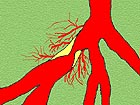
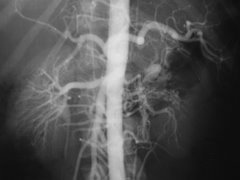
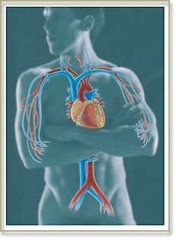
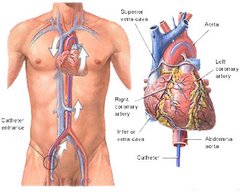
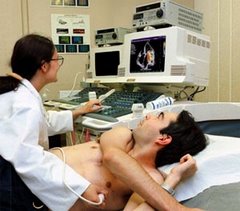
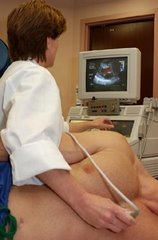
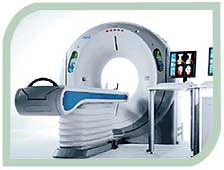
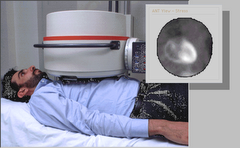
2 comments:
The application of EECP is much broader than angina and its effectiveness is not a mystery for those familiar with Eastern medicine. As an MD acupuncturist, this "device" caught my attention because it was shown also to be effective with restless leg syndrome. If you accept the existence of things you can't see like energy (as in electricity, radiowaves and most relevant, the human biofield) then EECP becomes a way of redistributing energy around the body to something more healthy. Those with angina and restless leg have a deficiency of energy in the upper body biofield and the EECP treatments must move (and concentrate) the blood and the Qi(energy) where it's needed. The movement of blood must stabilize and ground the energy field so that the improvement holds. (In acupuncture, you would need many treatments to get a comparable effect). But this device may also be effective for "treatment resistant" meaning medication-resistant depression, and other illnesses which involve an upper body deficiency of energy.
My question to you is what other, "more primitive" devices (you mentioned) are out there that do even a small piece of what EECP does (aside from the $100 relaxation boots). They might go a long way in improving many illnesses. My opinion is that much of medications' ineffectiveness is due to patients' unbalanced energy fields. Correct the fields and give the medication and Western Medicine might make a comeback. But if you think cardiologists ignore EECP, try MD's who ignore energy fields and what the imbalance might mean.
I would greatly appreciate an answer to my question and put the information to use.
The older I get, the more I come to appreciate alternative medicine. I am almost 60 years old and worked in the medical field as a nurse in the Army for more than 20 years. I currently have an osteopath who makes generous use of herbal supplements and nontraditional medicines in her practice. That doesn't mean shes not up-to-date on the current medicines available in the formulary, she just trusts the older tried and true therapies. She will not object to a patient who wants to have a consultation from an acupuncturist either.
My current cardiologist, the one who suggested EECP, is very open to alternative medical treatment. While he does wish I would undergo some invasive procedures, he does not get offended when I refuse. He pretty much lets me be the decision maker in my treatment plan and is not insulted when we disagree, at least not openly. When he dictates my visits though, he is quick to point out what he wanted to do versus what I would allow him to do.
As to your views on energy fields, I have seen and experienced the efficacy of magnets in treating many ailments so I am not at all surprised at your post.
Post a Comment